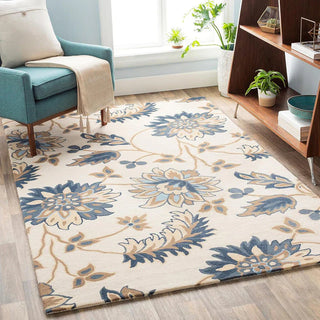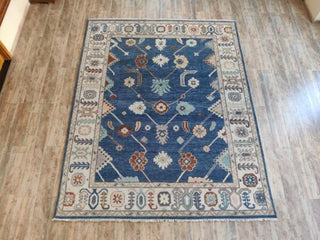When it comes to choosing the perfect rug for your home, one of the most important decisions is selecting the right material. Two of the most popular options you’ll encounter when you buy rugs online are wool rugs and synthetic rugs. Both have their unique advantages and considerations, depending on your lifestyle, budget, and design preferences.
Understanding the key differences between wool and synthetic rugs will help you make an informed choice, ensuring your new rug not only looks great but also meets your durability, comfort, and maintenance needs.
In this comprehensive guide, we’ll break down the pros and cons of wool and synthetic rugs, helping you decide which type is right for your home.
What Are Wool Rugs?
Wool rugs are made from natural fibers harvested from sheep. Wool has been used for centuries in rug making due to its durability, softness, and natural resilience.
Key Characteristics of Wool Rugs:
-
Natural Fiber: Wool is 100% renewable and biodegradable, making it an eco-friendly option.
-
Soft and Luxurious: Wool fibers provide a plush feel underfoot, enhancing comfort in living rooms and bedrooms.
-
Durable and Resilient: Wool naturally bounces back from foot traffic and resists crushing, which helps it maintain its texture and appearance over time.
-
Hypoallergenic: Wool resists dust mites and mold, making it a good choice for allergy sufferers.
-
Natural Flame Resistance: Wool is naturally flame retardant, adding safety to your home.
-
Good Insulation: Wool rugs help regulate indoor temperature and humidity.
Advantages of Wool Rugs
-
Longevity: Wool rugs are highly durable and can last decades with proper care.
-
Comfort: The softness and natural elasticity of wool provide superior comfort.
-
Eco-Friendly: Being natural and biodegradable, wool rugs are sustainable and environmentally responsible.
-
Breathability: Wool fibers absorb and release moisture, helping reduce mold and mildew.
-
Aesthetic Appeal: Wool rugs often have rich colors and textures that maintain their vibrancy over time.
Disadvantages of Wool Rugs
-
Price: Wool rugs typically cost more upfront compared to synthetic rugs.
-
Maintenance: While durable, wool requires proper care — avoid harsh chemicals and dry clean when necessary.
-
Stain Sensitivity: Wool is naturally stain resistant but can absorb liquids if left untreated. Immediate cleaning is essential.
-
Weight: Wool rugs tend to be heavier and more difficult to move or install.
What Are Synthetic Rugs?
Synthetic rugs are made from man-made fibers such as nylon, polyester, olefin (polypropylene), and acrylic. These fibers are engineered to mimic some of the desirable qualities of natural fibers but often come with enhanced stain resistance and affordability.
Key Characteristics of Synthetic Rugs:
-
Affordable: Generally less expensive than wool rugs, making them accessible for budget-conscious shoppers.
-
Stain Resistant: Many synthetic fibers are treated with stain-resistant coatings to repel spills and dirt.
-
Durable: Modern synthetics offer excellent durability, especially in high-traffic or commercial spaces.
-
Variety: Available in a wide range of colors, patterns, and textures.
-
Lightweight: Easier to move and install compared to wool.
Advantages of Synthetic Rugs
-
Cost-Effective: Lower price point suits renters or those seeking frequent style updates.
-
Easy Maintenance: Resistant to stains and fading, synthetic rugs clean easily with household products.
-
Durability: Fibers like nylon and polypropylene withstand heavy foot traffic and pets.
-
Colorfastness: Synthetic fibers retain color better in direct sunlight.
-
Allergy Friendly: Some synthetic rugs resist dust mites and allergens, though not naturally like wool.
Disadvantages of Synthetic Rugs
-
Environmental Impact: Made from petroleum-based products, synthetic rugs are less eco-friendly and not biodegradable.
-
Less Breathable: Synthetic fibers can trap moisture, potentially leading to mold if not cared for properly.
-
Less Luxurious Feel: Synthetic rugs often lack the plushness and natural warmth of wool.
-
Chemical Treatments: Some may emit VOCs (volatile organic compounds), so certifications matter.
Comparing Wool and Synthetic Rugs: Which Should You Choose?
| Feature | Wool Rugs | Synthetic Rugs |
|---|---|---|
| Material | Natural (sheep wool) | Man-made fibers (nylon, polyester) |
| Cost | Higher upfront cost | More affordable |
| Durability | Very durable, lasts decades | Durable, varies by fiber |
| Maintenance | Requires careful cleaning | Easy to clean and stain resistant |
| Comfort | Soft, plush, luxurious | Usually less soft, more utilitarian |
| Environmental Impact | Eco-friendly, biodegradable | Petroleum-based, less sustainable |
| Stain Resistance | Naturally resistant but needs quick cleaning | Often treated for high stain resistance |
| Allergy Friendly | Naturally hypoallergenic | Can be allergy friendly if treated |
| Color Variety | Rich natural colors, fewer synthetic options | Wide variety of colors and patterns |
| Weight | Heavier and dense | Lightweight |
Which One Is Right for You?
Consider Wool Rugs If:
-
You want a natural, eco-friendly product.
-
You prioritize softness and warmth underfoot.
-
You’re willing to invest in a durable, long-lasting rug.
-
You desire a timeless, rich look with natural fiber benefits.
-
You don’t mind occasional professional cleaning and maintenance.
Consider Synthetic Rugs If:
-
You are on a budget or want to update your décor frequently.
-
You need a rug that is easy to clean and maintain.
-
You have pets or kids and want strong stain resistance.
-
You want a wide range of colors and styles to choose from.
-
You prefer a lightweight rug that’s easy to move or store.
How to Buy Wool or Synthetic Rugs Online
When you buy rugs online from Carpet Planet, you get detailed information about fiber content, pile height, and care instructions, making it easier to select the right rug for your needs. Here are some tips:
-
Check Certifications: Look for OEKO-TEX, Green Label Plus, or other eco-certifications for wool and low-VOC guarantees for synthetics.
-
Order Samples: Get a feel for texture, color, and thickness before committing.
-
Read Customer Reviews: Learn about real-life performance and maintenance.
-
Consider Room Usage: Match rug type to foot traffic and purpose.
-
Ask for Expert Help: Carpet Planet’s customer service can guide your choice.
Caring for Your Wool and Synthetic Rugs
Proper care extends your rug’s life:
-
Wool: Vacuum regularly, clean spills immediately, and use professional cleaning every 12-18 months.
-
Synthetic: Vacuum frequently, spot clean with mild detergents, and avoid harsh chemicals.
Conclusion
Both wool and synthetic rugs have their unique strengths and are excellent choices when you buy rugs online — it ultimately depends on your priorities around budget, comfort, maintenance, and sustainability. Wool rugs offer timeless beauty and natural benefits, while synthetic rugs deliver practicality and affordability. At Carpet Planet, we offer a wide selection of both types, so you can find the perfect rug that fits your lifestyle and home design.
Frequently Asked Questions (FAQs)
1. Are wool rugs better than synthetic rugs?
Wool rugs excel in natural softness, durability, and eco-friendliness, while synthetic rugs offer affordability and stain resistance. Neither is objectively better; the best choice depends on your needs.
2. Which rugs are easier to clean, wool or synthetic?
Synthetic rugs are generally easier to clean due to their stain-resistant treatments, while wool requires gentler care and professional cleaning for longevity.
3. Can synthetic rugs cause allergies?
Some synthetic rugs may off-gas chemicals initially. Choosing OEKO-TEX certified rugs reduces this risk. Wool rugs are naturally hypoallergenic.
4. How long do wool and synthetic rugs last?
Wool rugs can last 20+ years with proper care. Synthetic rugs typically last 5-10 years, depending on fiber quality and use.
5. Are synthetic rugs environmentally friendly?
Most synthetic rugs are petroleum-based and less eco-friendly than wool, though some brands use recycled fibers to improve sustainability.



